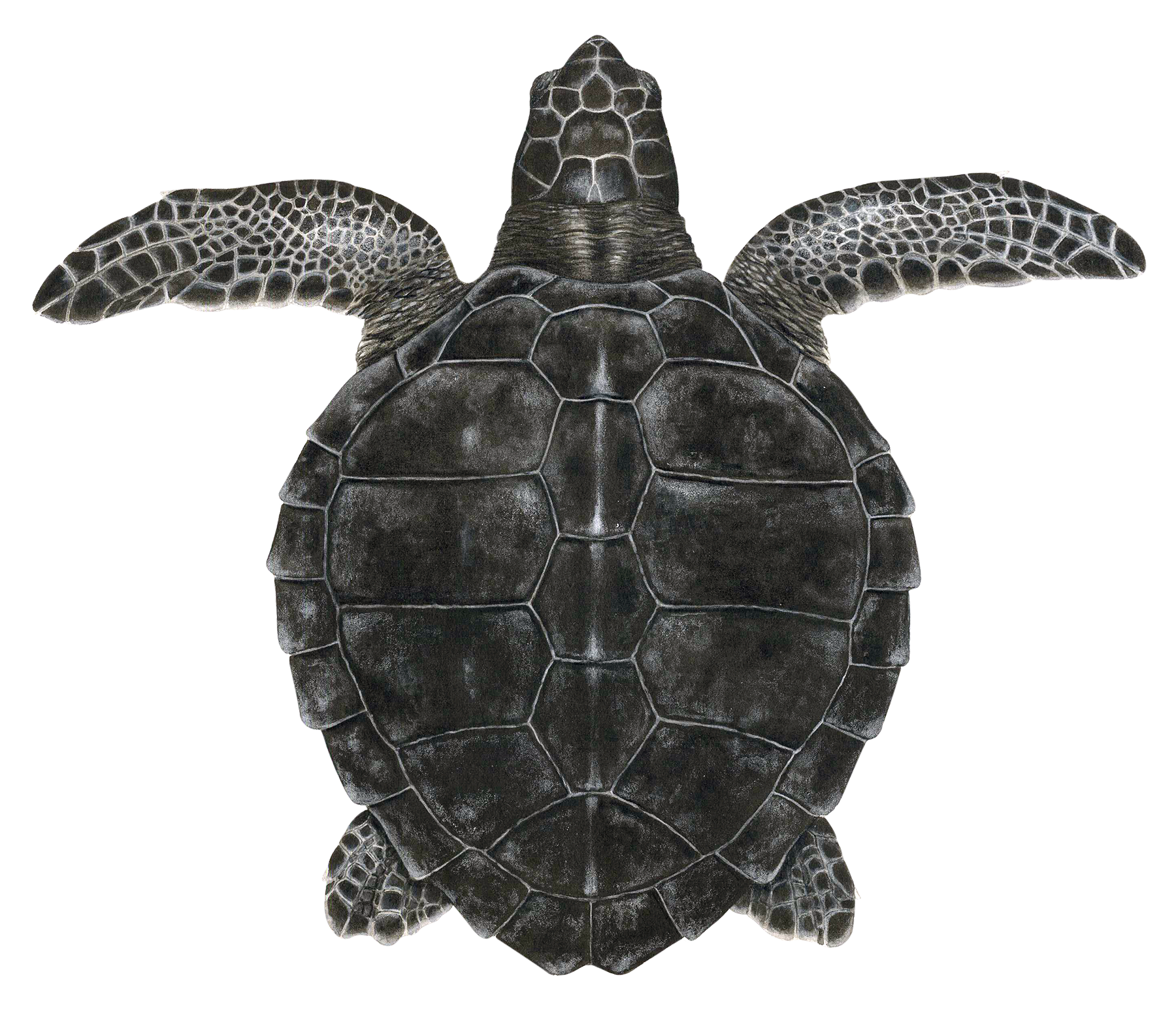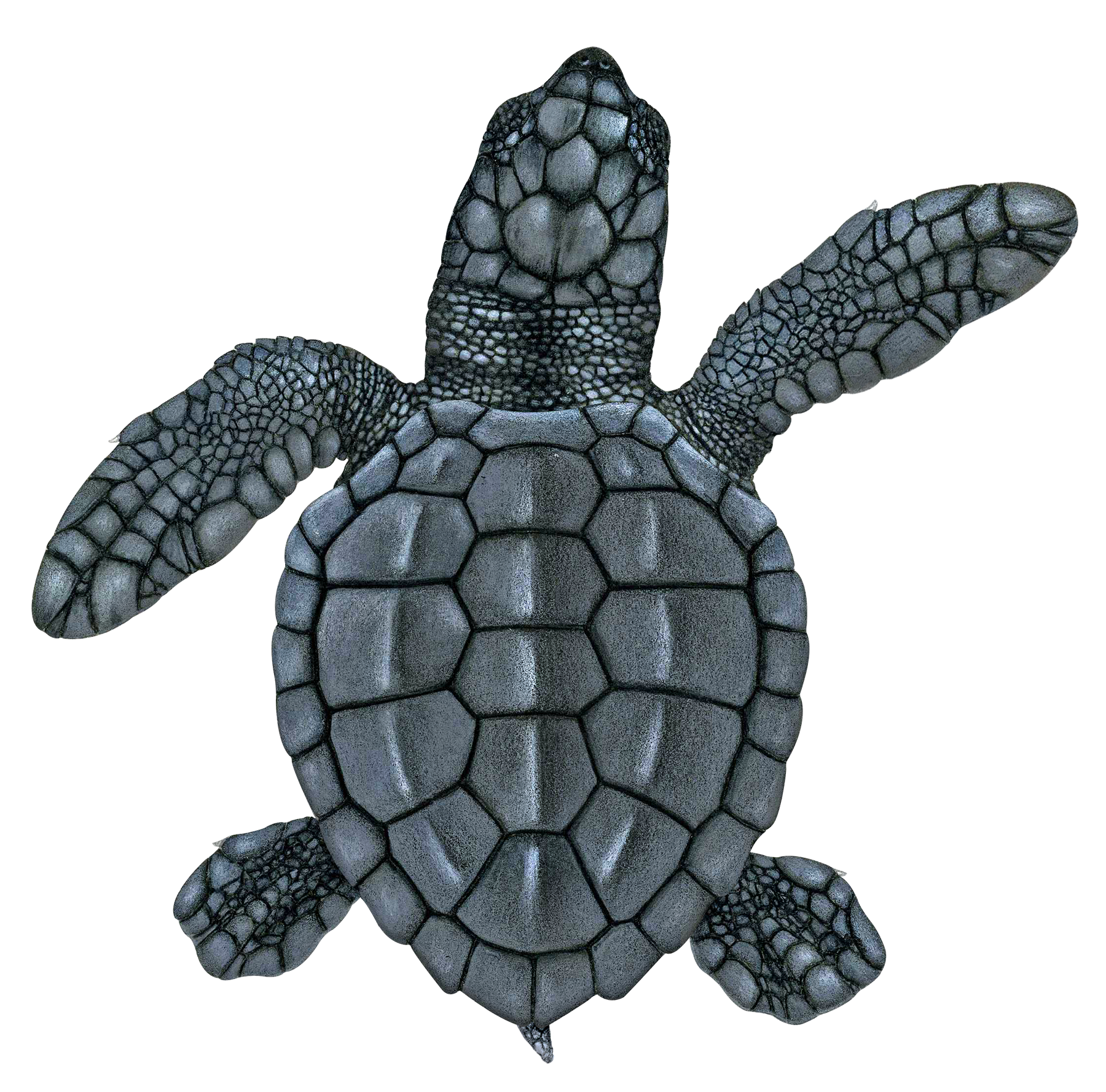Kemp's Ridley Sea Turtle (Lepidochelys kempii)
Conservationists brought Kemp’s Ridleys back from the edge of extinction using head-starting techniques. The smallest of all the sea turtles, Kemp’s Ridleys can experience cold stunning when water temperatures drop rapidly or unexpectedly.
Scientific Classification
Kingdom: Animalia
Phylum: Chordata
Class: Reptilia
Order: Testudines
Family: Cheloniidae
Life Cycle
Natural Lifespan: 30 - 50 years
Age at Sexual Maturity: Females 10 - 17 years; Males 11 - 30 years
Average Clutch Size: 100 eggs
Average Clutches per Season: 1 - 4 clutches
Nest Incubation Period: 45 - 65 days
Remigration Interval: 1.9 - 3.3 years
Species Description
Adult Weight: Up to 45 kgs (100 lbs)
Adult Size: 0.6 m (2 ft)
Appearance: Gray to light olive green rounded carapace
Diet: Crabs (particularly for juveniles), fish, jellyfish, mollusks
Habitat
Geographic Range: Tropical to temperate waters extending from the Gulf of Mexico into the Atlantic along the East Coast of the United States.
Marine Habitat Use: Most adult Kemp’s ridleys remain in coastal waters within the Gulf of Mexico.
Hatchling dispersing from nesting beaches along the Gulf of Mexico may spend up to two years navigating currents in the Atlantic. Nesting sites with currents facilitating rapid movement into deeper waters with fewer predators and dispersal to suitable feeding grounds lead to improved survival.
Conservation
Archival footage taken in 1947 documents more than 40,000 Kemp’s ridley in an arribada on a nesting beach in Tamaulipas, Mexico — but by 1985, biologists counted only 702 nests. Mexico initiated conservation of Kemp’s ridleys and later joined forces with the United States to protect the declining species. The joint conservation effort included a successful headstarting program in Texas, which positively contributed toward recovery. Implementation of laws in both Mexico and the United States requiring use of Turtle Excluder Devices on shrimp trawlers also improved conservation outcomes for Kemp’s ridleys.
Kemp’s ridley conservation efforts experienced a massive setback in the wake of the Deepwater Horizon oil spill. At 134 million gallons, Deepwater Horizon was the largest ever offshore oil spill in US waters. Despite heroic efforts by first responders and veterinarians, NOAA estimates that up to one fifth of juvenile Kemp’s ridleys died in the wake of the spill. Oil and chemical dispersants used in the clean up remain in the Gulf of California, but scientists have yet to determine their long-term impacts on Kemp’s ridleys and other sea turtles.
Upwell’s Work With Kemp’s Ridleys
These 7 Kemp’s ridley sea turtles were cold-stunned in Cape Cod, MA last November. They were collected and rehabilitated at the Georgia Sea Turtle Center thanks to Turtles Fly Too, The New England Aquarium, and The National Marine Life Center, and then tagged by Upwell before their release. Watch the whole story in our video!
Music by www.Bensound.com
Fun Fact
The name Kemp’s ridley is most likely a combination of a means to honor Richard Kemp, a fisherman who studied the species, and a linkage with the Olive ridley species that also exhibits mass nesting behavior.



